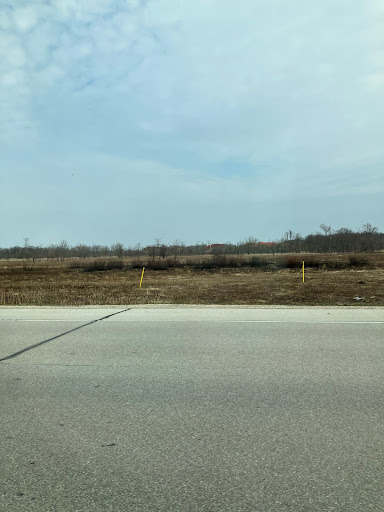
With holiday lights going up the day after Thanksgiving — sometimes even as early as Halloween — it’s no surprise that the winter holidays drum up excitement and anticipation.
For many, Christmas and winter festivities go hand-in-hand. In fact, according to AP-NORC, Christmas is the most celebrated winter holiday, with 92% of Americans celebrating. The remaining 8% is reserved for other cultural holidays, including the African-American and pan-African holiday Kwanzaa and the Jewish holiday Hanukkah.
But as our world becomes increasingly interconnected, many cultures and countries share traditions, even those who do not celebrate religiously.
Let’s take a journey across the world and illuminate unique winter celebrations across the globe.
Starting with Kwanzaa, the name derives from the Swahili phrase “matunda ya kwanza,” which translates to “fresh fruits” in English. Each family has slightly different traditions, but the week-long celebration includes songs, dances, and storytelling. This year, Kwanzaa will be from December 26th-January 1st. Throughout the seven nights, a child lights the kinara, the candleholder, and discusses one of the Nguzo Saba, the Seven Principles. The principles include Umoja (unity), Kujichagulia (self-determination), ujima (teamwork and responsibility), ujamaa (cooperative economics), nia(purpose), and imani (faith).
As for the decorations, many families decorate in accordance with the seven symbols. Mazao are crops mirroring harvest; a mkeka is a woven mat representing history and community; the kinara is the candleholder representing the pillars of the community; muhindi is the corn symbolizing the future of children; the kikombe cha Umoja is the Unity Cup; Mishumaa Saba is the seven candles representing the Nguzo Saba; Zawadi are the gifts for children that symbolize parental love.
Any winter holiday has to have good food, and Kwanzaa celebrations are full of it. Traditional plates include jollof rice, southern peach cobbler, southern fried okra, sweet potato pie, and African peanut stew. Across the 18 million people who celebrate Kwanzaa worldwide, as per ASU News, the holiday is rich with storytelling, music, dancing, and history.
Hanukkah, meaning “dedication” in Hebrew, is a Jewish holiday from December 25th to January 2nd.
In 164 BC, a group of Jewish fighters known as Maccabees defeated the Greek army that captured the holy city of Jerusalem in 200 BC. The commander of the Maccabees, Judah, reclaimed the Holy Temple of Jerusalem and looked to relight the menorah, an oil-based candelabrum. There was only enough purified oil to light the menorah for one day, but miraculously, the oil kept it lit for eight days. From this event, Hanukkah was born.
Those celebrating Hanukkah will undoubtedly own a menorah. Most menorahs have eight candles and an additional slot in the center for the shamash, a candle used to light the other candles. One candle is lit each night, and families gather around and recite blessings or songs as they illuminate the menorah.
To honor the oil from which the holiday originated, traditional Hanukkah food is often fried in oil. Common dishes include latkes ( potato cakes), sufganiyot (jelly donuts), and challah (dairy-free bread loaf).
Playing with a dreidel or a four-sided top is also customary. Each side has the Hebrew letters nun, gimmel, hei, and shin, an acronym for נס גדול היה פה (“a great miracle happened there” ). For those celebrating in Israel, the letters are slightly modified as an acronym for “a great miracle happened here”. The game is usually played for nuts, raisins, or coins. In addition, gelt, or the practice of giving children money to give to charity, emphasizes the importance of selflessness and intention in Jewish communities.
Traveling across the Asian continent to Eastern Asia, billions celebrate the Lunar New Year, many of which are Chinese, South Korean, Vietnamese, Singaporean, Malaysian, Filipino, and Indonesian. To South Koreans, Lunar New Year is 설날 (seollal romanized), while to the Vietnamese, it’s called Tết.
Lunar New Year begins with the first new moon of the lunar calendar; it will fall on January 25th of next year.
A common practice ten days before the Lunar New Year is cleaning houses thoroughly to remove any bad luck before the holiday. On Lunar New Year’s Eve, celebrations are saved for families and honoring ancestors through religious ceremonies that often reflect Confucian values of humility, righteousness, and propriety. The day of, dances, fireworks, and the Lantern Festival follow, along with traditional foods like yuanxiao (sticky rice balls), fagao (prosperity cake), and yusheng (raw fish and vegetables).
In Asia, red decorations will be abundant in streets, houses, and markets, traced back to one legend of the Lunar New Year:
Nian, a hideous lion, feasted on human flesh on Lunar New Year. However, Nian feared the color red, loud noises, and fire, and the practice of hanging red paper decorations and burning lanterns all night began. Perhaps most significantly, families give red envelopes with small amounts of money inside for good luck and prosperity, a frequent wish during the vibrant Lunar New Year.
Passing through the Pacific back towards Arizona and New Mexico, the Pueblo tribes Zuni and Hopi celebrate soyal. This year, it is on December 22nd, the shortest day and winter solstice.
Soyal celebrates the beginning of a new cycle of the Wheel of the Year — an annual cycle of seasonal festivals, marking the year’s main solar events like equinoxes, solstices, and the midpoints between them. A key 16-day practice before soyal begins is making Paphos — prayer sticks — to bless the community, plants, and animals. Then, scared underground chambers, kivas, are opened up to signify the start of the Kachina season. This part of the ceremony is called soyalangwul, from which soyal is derived.
The official ceremony begins on the winter solstice and symbolizes the second phase of Creation at the Dawn of Life. Prayers and rituals commence, planning another year of life and ushering the sun back towards its summer path.
The Hopi people, in particular, recognize December as the month when the spirits that guard over the Hopi, known as Kachinas, come down from the San Francisco peaks to return the sun to the world after a long and arduous winter. These spirits pray for rain, plentiful harvests, and health. They also act as messengers who teach good behaviors and are visualized as anything and everything, from a cloud to a cow.
The official ceremony begins on the winter solstice and symbolizes the second phase of Creation at the Dawn of Life. Prayers and rituals commence, planning another year of life and ushering the sun back towards its summer path.
Although soyal is not known to many, like any other holiday, it observes reverence, appreciation, and rich storytelling as a means to signal a new chapter in life.
Every winter holiday has a blend of unique traditions and shared themes, no matter who recognizes it or where. Most significantly, the persistence of humans across the globe to weave together history, food, storytelling, and gifts into elaborate celebrations indicates an innate nature to find something to commemorate and transcend all divides.



